100 Years at the Victorian School of Forestry
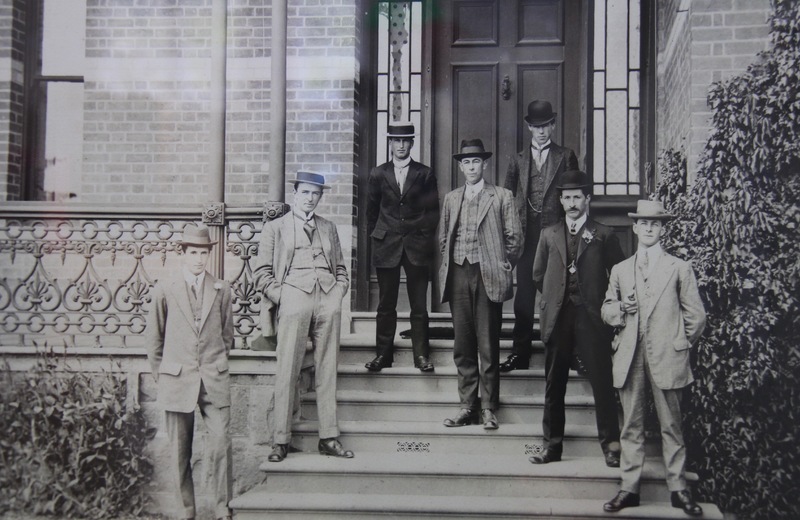
First class of students, 1912
Mounted photograph
Victorian School of Forestry
Creswick Campus Historical Collection, University of Melbourne
Cat no. 1224
In 1910, a group of four male students began classes at the Victorian School of Forestry.
Pictured from left to right: R.G. Lindsay, W.H. Horn, J. Sampson, A. Warren, H. Felstead (Nursery superintendent), N.L. Boston (Nursery staff), A. Ken (Nursery staff).
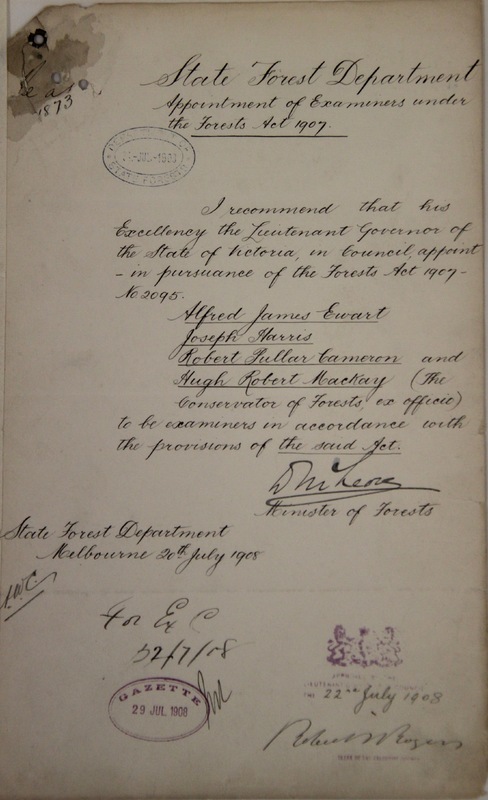
Appointment of examiners under the Forests Act 1907, 1908
State Forests Department, Forest Commission of Victoria
Paper certificate with black ink, signatures and rubber stamps
Creswick Campus Historical Collection, University of Melbourne
Cat no. 1306
After the Forests Act was passed in 1907, the State Forests Department and an examination system for foresters was established, giving the opportunity to implement formal forestry education.
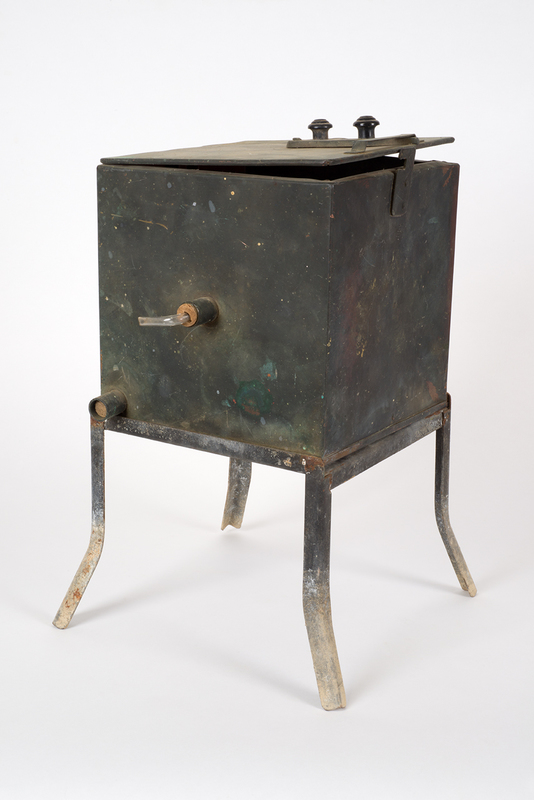
Steam distillation box for extraction of essential oils from wood or sawdust and leaves, 1930
Copper box and stand, Bakelite fittings, cork and glass tubing
Victorian School of Forestry
Creswick Campus Historical Collection, University of Melbourne
Cat no. 1048
The School ran a eucalyptus still for student research, seasoning eucalypt timber and treating leaves from around the state. This item on display is a demonstration still - the main still was located on the grounds ten metres beyond the billiard room block and its steam was occasionally responsible for the burning and hospitalisation of students.
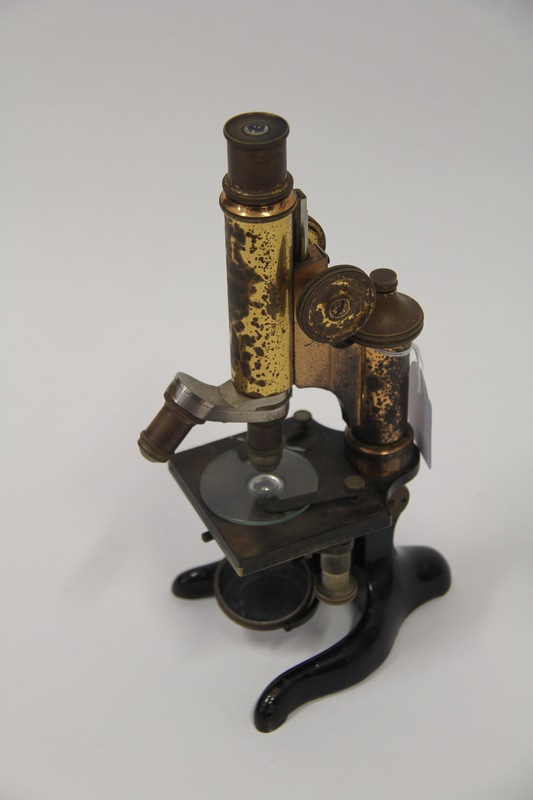
Microscope, c.1915
Equipment from Leitz Wetzlar Stativ IIB
Brass, original lacquer, 3 signed lenses, two-lens turret, 2 oculars, rack-and-pinion focussing, tilting device, 3-pinhole diaphragm
Victorian School of Forestry
Creswick Campus Historical Collection, University of Melbourne
Cat no. 1160
According to a student sending a letter home in 1925, the School had purchased four microscopes for 20 pounds which were used to examine bacteria in botany class.
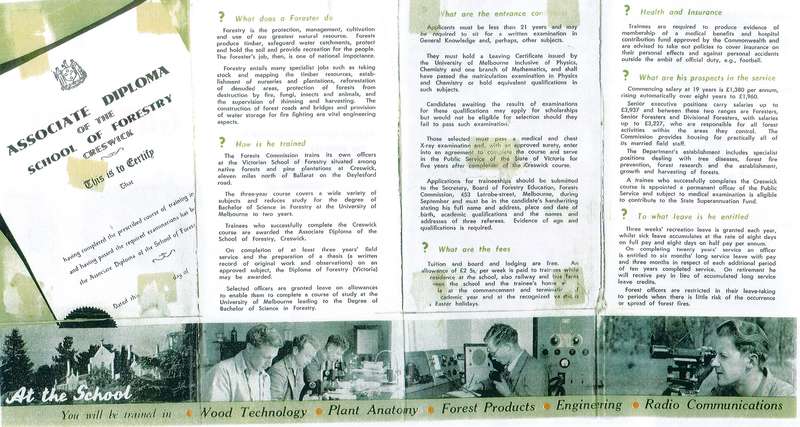
A Gateway to a Man’s Career, c1940
Paper brochure
Forest Commission of Victoria
Creswick Campus Historical Collection, University of Melbourne
Cat no. 1456

First women students, 1976
Mounted photograph
Victorian School of Forestry
Creswick Campus Historical Collection, University of Melbourne
Cat no. 1229
In 1976, the arrival at the School of the first four women students Sue Lowther, Megan Varty, Anne Coleman and Fiona Hamilton, was much publicised. While the female students were initially restricted to the library, herbarium and school grounds, their arrival shifted the idea that forestry was solely a male pursuit and according to former lecturer Dr Barry Tomkins, they “…handled a sometimes difficult situation very well.” By 1997, women made up half of the School’s enrolled students.
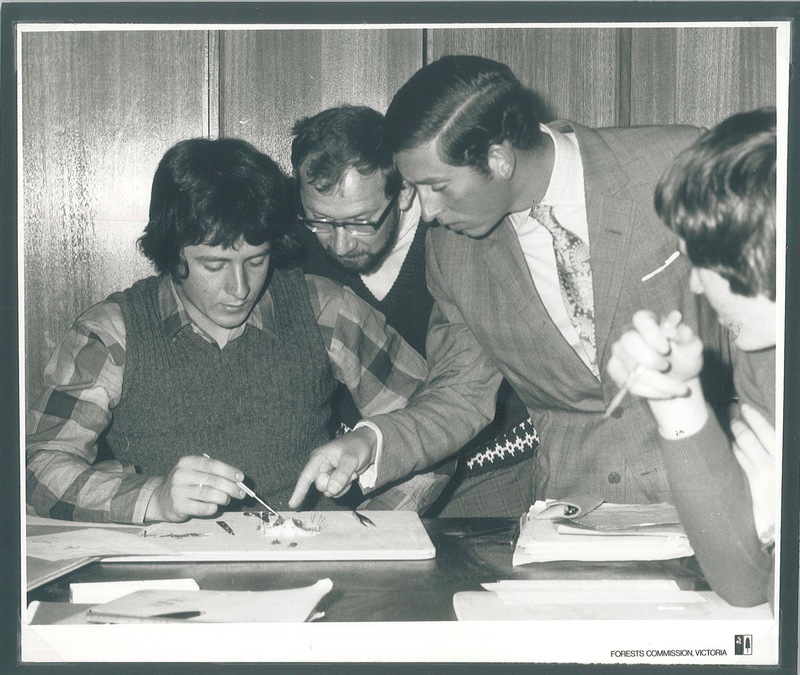
HRH Prince Charles visiting Victorian School of Forestry, 1976
Photograph
Forest Commission of Victoria
Creswick Campus Historical Collection, University of Melbourne
Cat no. 1451
In October 1974, HRH the Prince of Wales visited the Victorian School of Forestry on his Australian tour. He stayed on site at the Post-Graduate Building and planted a Eucalyptus leucoxylon (yellow gum) by the Science Block. Here he is seen with (L to R) Richard Steiner (student), Patrick Previtt (zoology lecturer from Ballarat College of Advanced Education, now Federation University, formerly School of Mines Ballarat and Mark Woolman (student) in the laboratory.
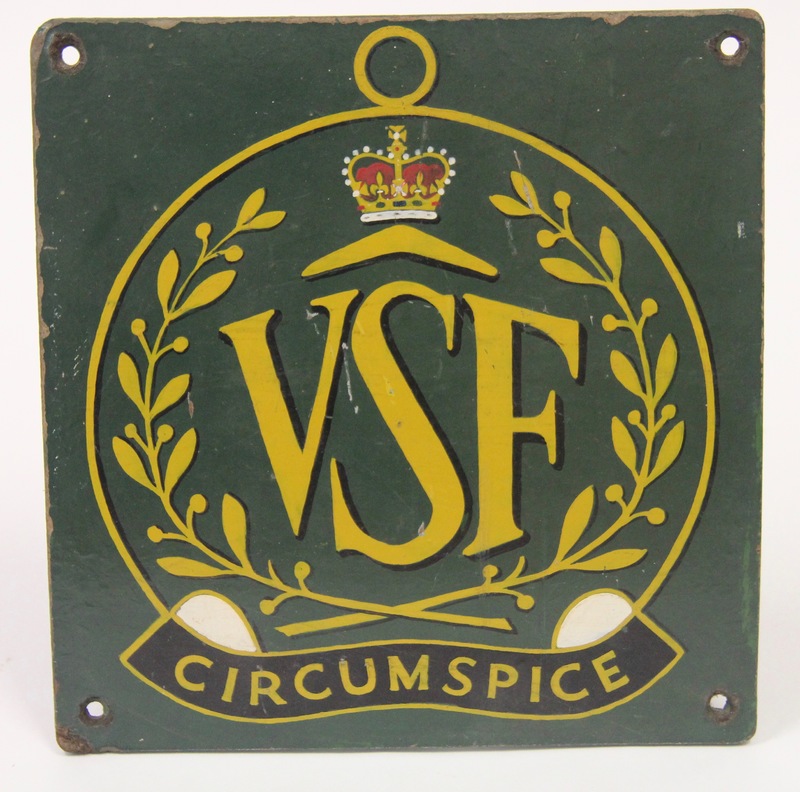
VSF Plaque, year unknown
Hand-painted masonite plaque showing the VSF logo and school motto: Circumspice (translates to “Look around you”)
Victorian School of Forestry
Creswick Campus Historical Collection, University of Melbourne
Cat no. 1316
The Victorian School of Forestry and the University of Melbourne have benefited from a long reciprocal relationship with attempts in 1951, 1958 and 1972 to combine their two forestry courses into the one program. The eventual 1980 integration allowed VSF courses to be recognised on a tertiary level and subsequently raised the reputation of the School.
Since opening in 1910, the Victorian School of Forestry has undergone many changes. In the early years, practical training was completed under the direction of John Johnstone, Superintendent of State Plantations, but the School lacked trained foresters to teach specialised coursework. Teachers were recruited from the Ballarat School of Mines and focussed solely on basic sciences and labour in the nearby nursery and forests.
In 1923 Principal Charlie Carter, recently returned from Yale with a Masters of Forestry, used his expertise to reform the curriculum. Alongside more advanced theoretical classwork, he encouraged the development of practical skills and student research through opening a eucalyptus still, a charcoal kiln, an oil testing laboratory and a sawmill. During this period, the School also established a strong relationship with the University of Melbourne, sending high-achieving graduates to Parkville to complete a Bachelor of Science.
In the 1940s, despite forestry being deem a ‘reserved occupation,’ many students enlisted in World War II and served predominantly in forestry companies for military construction. Following the war between 1946 and 1950, student enrolments at the School increased with the annual intake of four students bolstered by the enrolment of nine ex-servicemen.
In the 1970s, the School experienced a tumultuous and exciting period. This included a visit from HRH the Prince of Wales in 1974, and in 1976, enrolment was opened to women for the first time in the School’s history. In 1977, after federal funding to single disciplinary colleges ceased, the Victorian School of Forestry and the University of Melbourne integrated their forestry programs.
Following the introduction of the Melbourne Model in 2008, the School evolved again to cater principally for post-graduate study and research. In 2015, the most recent change occurred, with the campus joining the Faculty of Science as the School of Ecosystem and Forest Sciences.